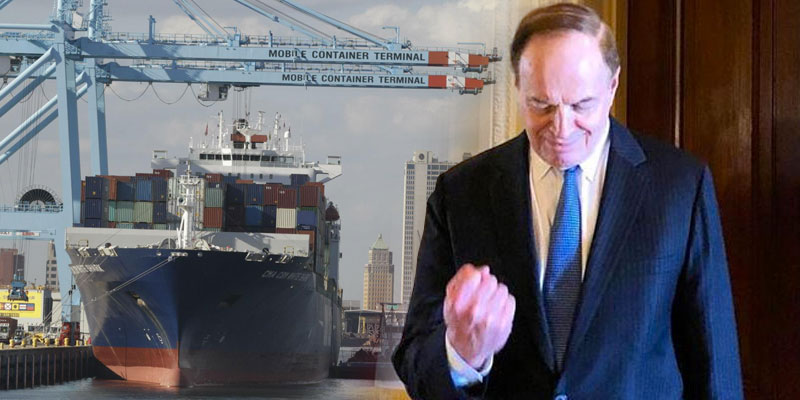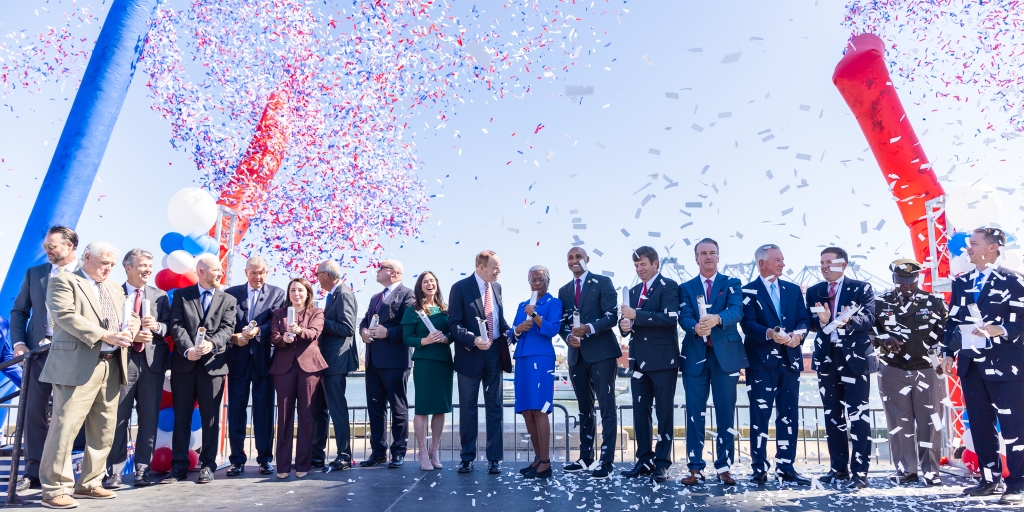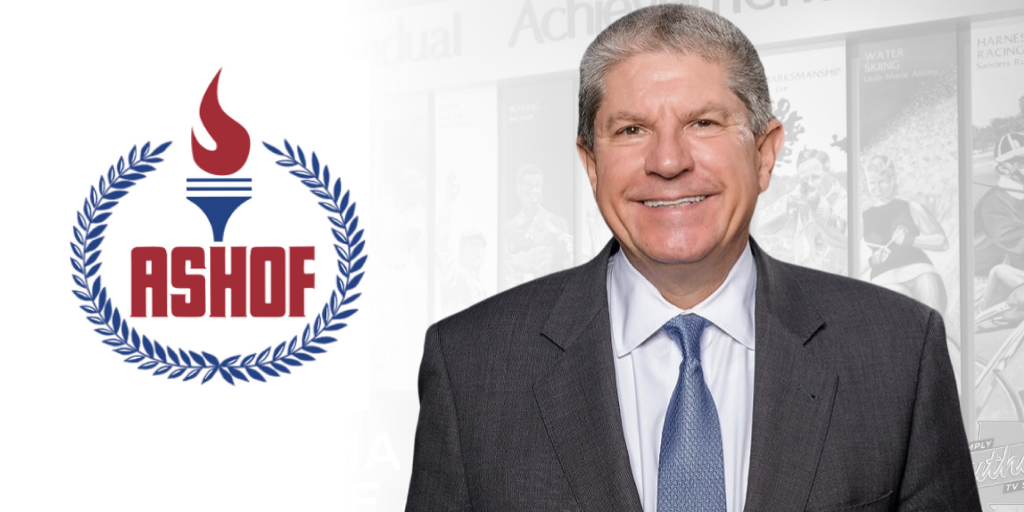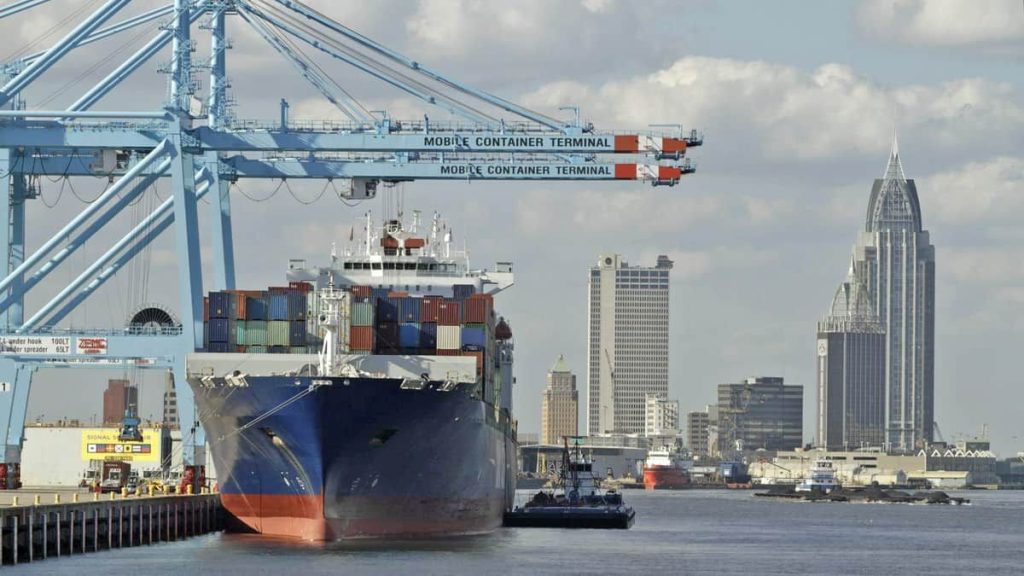The U.S. Senate on Thursday gave final passage to a domestic appropriations package that will fund the government through the end of Fiscal Year 2020, with Senator Richard Shelby (R-AL) once again delivering in a historic way for his home state.
Shelby, as the powerful chair of the Senate Appropriations Committee, served as a lead negotiator on the funding measure, which represents compromise between the Senate and House as well as Republicans and Democrats.
While Shelby scored major victories for Alabama in both this funding measure and a companion defense package, one major achievement has flown under the radar until now.
Yellowhammer News has learned that funding that could complete the deepening and widening of the Port of Mobile is included in the domestic appropriations package – H.R. 1865. Specifically, the FY20 Energy and Water Development Bill includes a new regional dredge demonstration program for the Central Gulf Coast which will explore innovative ways of executing dredging in a logical and sequenced manner to seek efficiencies, cost savings and minimize disruptions to critical construction and maintenance dredging requirements across the nation.
H.R. 1865 passed the Senate on an overwhelmingly 71-23 vote. H.R. 1158, the national security funding measure, is expected to pass the Senate later Thursday.
The funding packages, which passed the House on a bipartisan basis earlier this week, will now go to President Donald Trump’s desk. He is expected to sign them.
While the Army Corps of Engineers will still have to allocate the funding in the work plan and award a contract for the dredging following H.R. 1865 being signed, the Port of Mobile is eligible for inclusion in this program. This significant funding would allow the Corps to complete the Port of Mobile project that Shelby has been championing for years.
Not only has Shelby tirelessly worked in Congress to secure federal funding, but he helped bring more in-state elected officials and stakeholders on board this spring. After his advocacy, Governor Kay Ivey (R-AL) in March signed into law the Rebuild Alabama Act, a bipartisan measure overwhelmingly passed by the Alabama state legislature that allocates a small portion of state fuel tax proceeds to support approximately $150 million in bonds to meet the federal cost-share requirements for the harbor project. This also came after Shelby spearheaded federal legislation to passage that increased the federal government’s share of the funding from 50% to 75%, lowering the burden on the state.
“The deepening and the widening of the Port of Mobile is a once-in-a-lifetime economic development opportunity,” Shelby has said. “This project has the ability to transform Mobile and our state’s economy for the next one hundred years.”
In an interview with Yellowhammer News this week, Alabama State Port Authority director and CEO James K. “Jimmy” Lyons said, “We’re very thankful for everything Senator Shelby has done for us over the years. He’s a big, big advocate of Alabama, and he recognizes the value that a competitive seaport has for the state. He’s put his money where his mouth is — he’s been our biggest advocate.”
The Alabama State Port Authority represents the State of Alabama’s public, deep-water terminals serving general cargo, container, over-dimensional and bulk cargoes supporting over 134,600 jobs and $22.4 billion in economic impact to the state.
Status of the project
This fall, Lyons and the U.S. Army Corps of Engineers district commander Colonel Sebastien Joly signed the Mobile Harbor Pre-Construction, Engineering and Design Agreement. This came soon after the project, which will upgrade Mobile Harbor to accommodate larger vessels and improve transit efficiencies at Alabama’s only deep-water seaport, received federal authorization.
The engineering and design phase establishes the construction parameters to deepen and widen at the Port of Mobile, which is integral to the entire state’s economy.
Under the corps’ record of decision issued in early September, the project will deepen the existing bar, bay and river channels by five feet each to a project depth of 50 feet (15.24m), with additional depths for wave allowances, advanced maintenance and allowable over depth for dredging (total depths of 56, 54 and 54 feet, respectively).
The project also includes widening the bay channel by 100 feet (328.08m) for three nautical miles to accommodate two-way vessel traffic and other safety improvements.
Construction on the modifications is expected to begin in late 2020. However, to finish the project, the final slice of federal funding will still be needed.
Lyons explained the possibilities brought about by the Shelby-negotiated FY 2020 funding measures.
Of the new regional dredge demonstration program funding, Lyons advised, “There could be several ports that are eligible.”
“But we will be certainly one of those,” he continued, “and we think that we could compete very well considering where we are and the fact that we have a record of decision, we have a permit in hand, the engineering is underway. So, we’re about as shovel ready as you can be as far as a project of this nature is concerned. We think that we should be able to compete very well for it. There’s no guarantee, but we think we would be well-positioned to participate in that.”
Lyons added that there is “a number of other things” made available in the funding measures the Port of Mobile could take advantage of.
“There’s a lot of things in there for ports that of course Shelby had a lot to do with,” he noted, detailing funding under the EPA that could go towards more diesel emissions reductions for the Port Authority’s locomotives as well as general port infrastructure and maintenance dredging monies the Port Authority will be able to apply for.
“What Shelby’s done this year has been absolutely magnificent,” Lyons explained. “The whole port industry is really abuzz about the bills this year that relate to things that we do. And certainly here in Mobile, we’re well positioned to compete and take advantage of these opportunities.”
Growth begets growth
The Port of Mobile is now the 11th largest seaport in North America by overall tonnage and has been one of the fastest-growing in recent years.
Since its opening in 2008, Alabama’s container terminal at the Port of Mobile has been recognized for overall containerized cargo growth among North American ports, including fastest growth port in 2016, top-five fastest growth ports in 2017 and fastest growth import port in 2018.
Five container services now call at the Port of Mobile’s APM Terminals. The port handled 245,884 loaded TEU in the first nine months of this year, an incredible 32.7% increase over the same period last year, according to PIERS.
And this does not even account for the tremendous impact that the coal industry has on the Port of Mobile. The port’s McDuffie Coal Terminal generates approximately 50% of the total annual revenue earned by the Alabama State Port Authority for its overall operations at the port.
In 2018 alone, 11 million short tons of high-quality Alabama-mined met coal was exported to global steelmakers. This amounted to $2 billion worth of met coal being shipped out through the Port of Mobile last year – a dollar amount unprecedented in at least recent history.
Overall, the harbor improvement project is keeping pace with ongoing terminal investments in the Yellowhammer State’s seaport to ensure economies of scale and competitive rates for the seaport’s shippers.
The port authority will complete its $50 million, Phase 3 container terminal expansion in early 2020 delivering another 20 acres of handling yard and extending the dock to allow simultaneous berth of two Post-Panamax sized ships. The project complements prior investments totaling $450 million in marine and rail container intermodal facilities that include two Super Post-Panamax and two Post-Panamax ship to shore gantry cranes.
“The deepening and improvements to the harbor will help us be more competitive,” Lyons explained. “We should be the first port in the U.S. Gulf to get 50 feet of draft. It’s a significant thing for Alabama.”
The impact of the Port of Mobile and the harbor project is truly statewide, he outlined. From poultry farming to lumber and paper products to automotive manufacturing, important sectors across the state will reap the rewards.
‘The champion’
While Shelby has referred to the project as “a game-changer,” it has been Alabama’s senior senator helping make the port’s boon possible every step of the way.
Lyons was profuse in his praise for Shelby.
“Shelby has been one of our biggest champions,” Lyons underlined. “There’s a lot of things that have happened here that probably couldn’t have happened — or couldn’t have happened to [the same] scale — [without him]. Our container facility, our intermodal facility, he was the champion. I’ve been here for a little over 20 years, I’ve been working with him my entire time here. And he has been a steadfast champion and believer of the port and what the port does for the state of Alabama.”
In a statement after H.R. 1865 passed on Thursday, Shelby said, “This project is not only of great importance to me, but it will allow for more goods to be shipped and sold from our state, extending benefits throughout Alabama while creating more economic opportunities. I am exceptionally proud that funding is included in this appropriations package, and I look forward to the immeasurable impact this project will have on our state once completed.”
Sean Ross is the editor of Yellowhammer News. You can follow him on Twitter @sean_yhn













